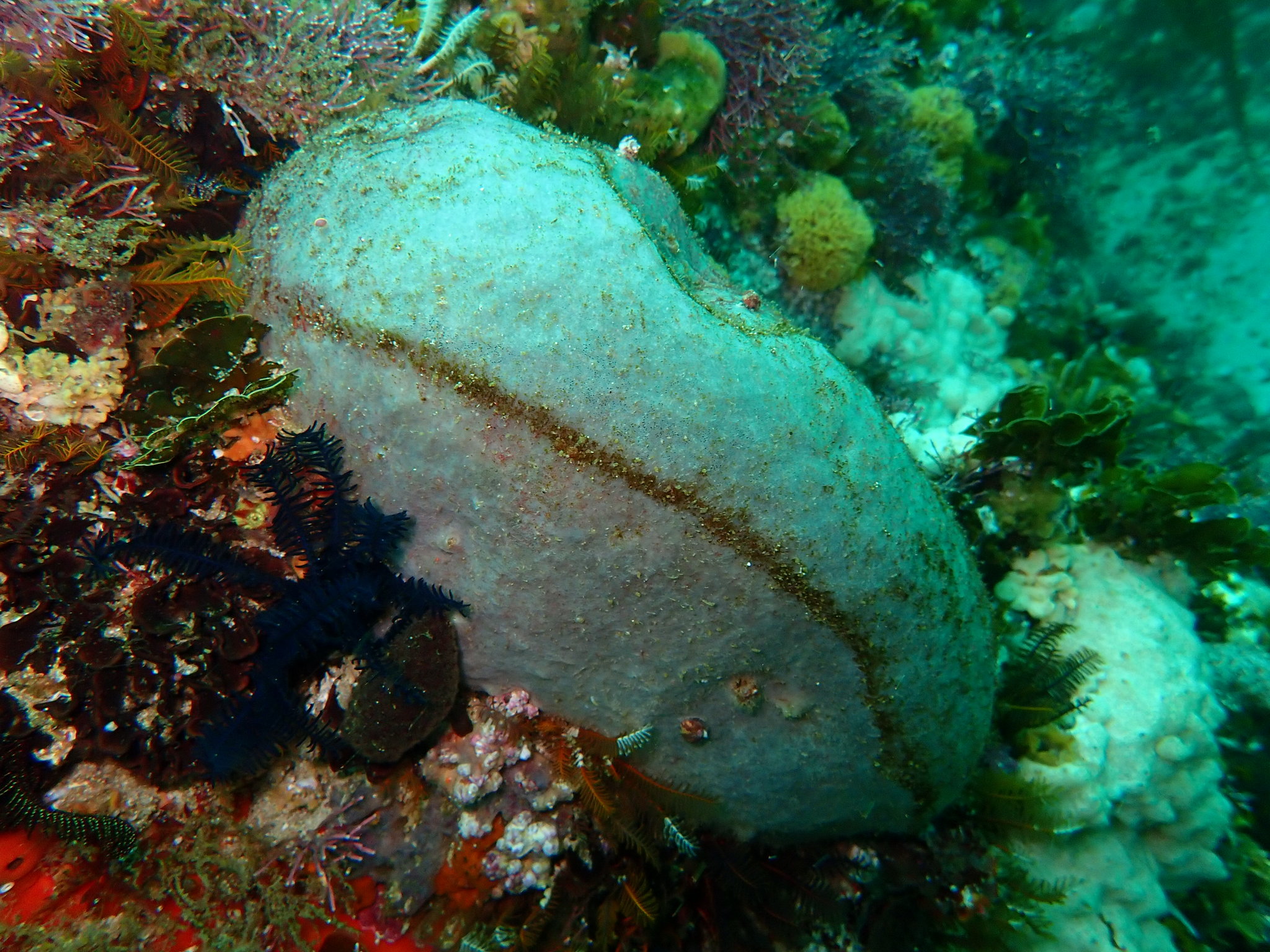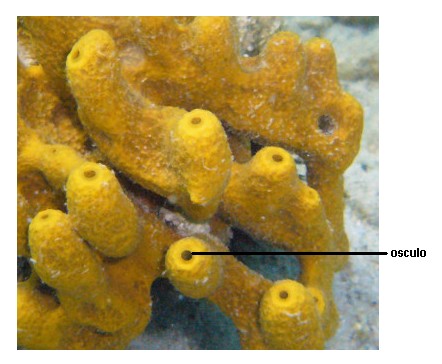|
Stelletta Agulhana
The grey wall sponge (''Stelletta agulhana'') is a species of sea sponge belonging to the family Ancorinidae.Samaai, T. and Gibbons, M.J. 2005. Demospongiae taxonomy and biodiversity of the Benguela region on the west coast of South Africa. ''Afr. Nat. Hist''. 1(1):1-96 It is found around the coast of Southern Africa from the Northern Cape to KwaZulu-Natal KwaZulu-Natal (, also referred to as KZN and known as "the garden province") is a province of South Africa that was created in 1994 when the Zulu bantustan of KwaZulu ("Place of the Zulu" in Zulu) and Natal Province were merged. It is locate .... It is an endemic species. Description The grey wall sponge may grow to 10 cm thick and 40–50 cm in length. It is a massive grey sponge with fine spicules protruding from its surface. It has a stony texture, with small oscula visible on the upper surface. Habitat This sponge lives on rocky reefs in 2-90m of water.Jones, Georgina. ''A field guide to the mar ... [...More Info...] [...Related Items...] OR: [Wikipedia] [Google] [Baidu] |
Stelletta Agulhana 14169990
''Stelletta'' is a genus of sea sponges belonging to the family Ancorinidae. Species The following species are recognised in the genus Stelletta: *'' Stelletta addita'' (Topsent, 1938) *'' Stelletta aeruginosa'' Carter, 1886 *'' Stelletta agglutinans'' (Dendy, 1905) *'' Stelletta agulhana'' Lendenfeld, 1907 *'' Stelletta anancora'' (Sollas, 1886) *'' Stelletta anasteria'' Esteves & Muricy, 2005 *'' Stelletta anthastra'' Lehnert & Stone, 2014 *'' Stelletta arenaria'' Bergquist, 1968 *'' Stelletta aruensis'' Hentschel, 1912 *'' Stelletta atrophia'' Hoshino, 1981 *'' Stelletta beae'' Hajdu & Carvalho, 2003 *'' Stelletta bocki'' Rao, 1941 *'' Stelletta boglicii'' Schmidt, 1862 *''Stelletta brevidens'' (Topsent, 1897) *'' Stelletta brevioxea'' Pulitzer-Finali, 1993 *'' Stelletta brevis'' Hentschel, 1909 *'' Stelletta calyx'' Sim & Kim, 2003 *'' Stelletta capensis'' Lévi, 1967 *''Stelletta carolinensis'' (Wells, Wells & Gray, 1960) *''Stelletta cavernosa'' (Dendy, 1916) *''Stelletta ce ... [...More Info...] [...Related Items...] OR: [Wikipedia] [Google] [Baidu] |
Species
In biology, a species is the basic unit of classification and a taxonomic rank of an organism, as well as a unit of biodiversity. A species is often defined as the largest group of organisms in which any two individuals of the appropriate sexes or mating types can produce fertile offspring, typically by sexual reproduction. Other ways of defining species include their karyotype, DNA sequence, morphology, behaviour or ecological niche. In addition, paleontologists use the concept of the chronospecies since fossil reproduction cannot be examined. The most recent rigorous estimate for the total number of species of eukaryotes is between 8 and 8.7 million. However, only about 14% of these had been described by 2011. All species (except viruses) are given a two-part name, a "binomial". The first part of a binomial is the genus to which the species belongs. The second part is called the specific name or the specific epithet (in botanical nomenclature, also sometimes i ... [...More Info...] [...Related Items...] OR: [Wikipedia] [Google] [Baidu] |
Sea Sponge
Sponges, the members of the phylum Porifera (; meaning 'pore bearer'), are a basal animal clade as a sister of the diploblasts. They are multicellular organisms that have bodies full of pores and channels allowing water to circulate through them, consisting of jelly-like mesohyl sandwiched between two thin layers of cells. Sponges have unspecialized cells that can transform into other types and that often migrate between the main cell layers and the mesohyl in the process. Sponges do not have nervous, digestive or circulatory systems. Instead, most rely on maintaining a constant water flow through their bodies to obtain food and oxygen and to remove wastes. Sponges were first to branch off the evolutionary tree from the last common ancestor of all animals, making them the sister group of all other animals. Etymology The term ''sponge'' derives from the Ancient Greek word ( 'sponge'). Overview Sponges are similar to other animals in that they are multicellular, he ... [...More Info...] [...Related Items...] OR: [Wikipedia] [Google] [Baidu] |
Family (biology)
Family ( la, familia, plural ') is one of the eight major hierarchical taxonomic ranks in Linnaean taxonomy. It is classified between order and genus. A family may be divided into subfamilies, which are intermediate ranks between the ranks of family and genus. The official family names are Latin in origin; however, popular names are often used: for example, walnut trees and hickory trees belong to the family Juglandaceae, but that family is commonly referred to as the "walnut family". What belongs to a family—or if a described family should be recognized at all—are proposed and determined by practicing taxonomists. There are no hard rules for describing or recognizing a family, but in plants, they can be characterized on the basis of both vegetative and reproductive features of plant species. Taxonomists often take different positions about descriptions, and there may be no broad consensus across the scientific community for some time. The publishing of new data and opini ... [...More Info...] [...Related Items...] OR: [Wikipedia] [Google] [Baidu] |
Ancorinidae
Ancorinidae is a family of marine sponges belonging to the order of Tetractinellida. Genera *''Ancorina'' Schmidt, 1862 *'' Asteropus'' Sollas, 1888 *'' Chelotropella'' Lendenfeld, 1907 *'' Cryptosyringa'' Vacelet, 1979 *'' Dercitus'' Gray, 1867 *'' Disyringa'' Sollas, 1888 *''Ecionemia ''Ecionemia'' is a genus of sea sponges belonging to the family Ancorinidae. This genus is characterized by a high density of siliceous spicules. Members of this genus are known to be eaten by hawksbill turtle The hawksbill sea turtle (''E ...'' Bowerbank, 1862 *'' Holoxea'' Topsent, 1892 *''Jaspis'' Gray, 1867 *'' Psammastra'' Sollas, 1886 *'' Rhabdastrella'' Thiele, 1903 *'' Stelletta'' Schmidt, 1862 *'' Stellettinopsis'' Carter, 1879 *'' Stryphnus'' Sollas, 1886 *'' Tethyopsis'' Stewart, 1870 *'' Tribrachium'' Weltner, 1882 References Tetractinellida Taxa named by Eduard Oscar Schmidt {{demosponge-stub ... [...More Info...] [...Related Items...] OR: [Wikipedia] [Google] [Baidu] |
Southern Africa
Southern Africa is the southernmost subregion of the African continent, south of the Congo and Tanzania. The physical location is the large part of Africa to the south of the extensive Congo River basin. Southern Africa is home to a number of river systems; the Zambezi River being the most prominent. The Zambezi flows from the northwest corner of Zambia and western Angola to the Indian Ocean on the coast of Mozambique. Along the way, the Zambezi River flows over the mighty Victoria Falls on the border between Zambia and Zimbabwe. Victoria Falls is one of the largest waterfalls in the world and a major tourist attraction for the region. Southern Africa includes both subtropical and temperate climates, with the Tropic of Capricorn running through the middle of the region, dividing it into its subtropical and temperate halves. Countries commonly included in Southern Africa include Angola, Botswana, the Comoros, Eswatini, Lesotho, Madagascar, Malawi, Mauritius, Mozambique, Namib ... [...More Info...] [...Related Items...] OR: [Wikipedia] [Google] [Baidu] |
Northern Cape
The Northern Cape is the largest and most sparsely populated province of South Africa. It was created in 1994 when the Cape Province was split up. Its capital is Kimberley. It includes the Kalahari Gemsbok National Park, part of the Kgalagadi Transfrontier Park and an international park shared with Botswana. It also includes the Augrabies Falls and the diamond mining regions in Kimberley and Alexander Bay. The Namaqualand region in the west is famous for its Namaqualand daisies. The southern towns of De Aar and Colesberg found within the Great Karoo are major transport nodes between Johannesburg, Cape Town and Port Elizabeth. Kuruman can be found in the north-east and is known as a mission station. It is also well known for its artesian spring and Eye of Kuruman. The Orange River flows through the province of Northern Cape, forming the borders with the Free State in the southeast and with Namibia to the northwest. The river is also used to irrigate the many vineyards in the ... [...More Info...] [...Related Items...] OR: [Wikipedia] [Google] [Baidu] |
KwaZulu-Natal
KwaZulu-Natal (, also referred to as KZN and known as "the garden province") is a province of South Africa that was created in 1994 when the Zulu bantustan of KwaZulu ("Place of the Zulu" in Zulu) and Natal Province were merged. It is located in the southeast of the country, with a long shoreline on the Indian Ocean and sharing borders with three other provinces and the countries of Mozambique, Eswatini and Lesotho. Its capital is Pietermaritzburg, and its largest city is Durban. It is the second-most populous province in South Africa, with slightly fewer residents than Gauteng. Two areas in KwaZulu-Natal have been declared UNESCO World Heritage Sites: the iSimangaliso Wetland Park and the uKhahlamba Drakensberg Park. These areas are extremely scenic as well as important to the surrounding ecosystems. During the 1830s and early 1840s, the northern part of what is now KwaZulu-Natal was established as the Zulu Kingdom while the southern part was, briefly, the Boer Natalia Repu ... [...More Info...] [...Related Items...] OR: [Wikipedia] [Google] [Baidu] |
Endemic
Endemism is the state of a species being found in a single defined geographic location, such as an island, state, nation, country or other defined zone; organisms that are indigenous to a place are not endemic to it if they are also found elsewhere. For example, the Cape sugarbird is found exclusively in southwestern South Africa and is therefore said to be ''endemic'' to that particular part of the world. An endemic species can be also be referred to as an ''endemism'' or in scientific literature as an ''endemite''. For example '' Cytisus aeolicus'' is an endemite of the Italian flora. '' Adzharia renschi'' was once believed to be an endemite of the Caucasus, but it was later discovered to be a non-indigenous species from South America belonging to a different genus. The extreme opposite of an endemic species is one with a cosmopolitan distribution, having a global or widespread range. A rare alternative term for a species that is endemic is "precinctive", which applies to ... [...More Info...] [...Related Items...] OR: [Wikipedia] [Google] [Baidu] |
Osculum
The osculum (plural "oscula") is an excretory structure in the living sponge, a large opening to the outside through which the current of water exits after passing through the spongocoel. Wastes diffuse into the water and the water is pumped through the osculum carrying away with it the sponge's wastes. Sponges pump large volumes of water: typically a volume of water equal to the sponge's body size is pumped every five seconds. The size of the osculum is regulated by contractile myocytes. Its size, in turn, is one of the factors which determines the amount of water flowing through the sponge Sponges, the members of the phylum Porifera (; meaning 'pore bearer'), are a basal animal clade as a sister of the diploblasts. They are multicellular organisms that have bodies full of pores and channels allowing water to circulate through t .... It can be closed completely in response to excess silt in the water. References Sponge anatomy {{animal-anatomy-stub ... [...More Info...] [...Related Items...] OR: [Wikipedia] [Google] [Baidu] |
Tetractinellida
Tetractinellida is an order of sea sponges belonging to the Class Demospongiae. First described in 1876, this order received a new description in 2012 and replaced the two orders Astrophorida and Spirophorida, which then became sub-orders as Astrophorina and Spirophorina. Families ; Suborder Astrophorina Sollas, 1887 * Family Ancorinidae Schmidt, 1870 * Family Calthropellidae Lendenfeld, 1907 * Family Corallistidae Sollas, 1888 * Family Geodiidae Gray, 1867 * Family Isoraphiniidae Schrammen, 1924 * Family Macandrewiidae Schrammen, 1924 * Family Neopeltidae Sollas, 1888 * Family Pachastrellidae Carter, 1875 * Family Phymaraphiniidae Schrammen, 1924 * Family Phymatellidae Schrammen, 1910 * Family Pleromidae Sollas, 1888 * Family Theneidae Carter, 1883 * Family Theonellidae Lendenfeld, 1903 * Family Thrombidae Sollas, 1888 * Family Vulcanellidae Vulcanellidae is a family of sponges belonging to the order Tetractinellida Tetractinellida is an Order (biology), order of ... [...More Info...] [...Related Items...] OR: [Wikipedia] [Google] [Baidu] |





.jpg)
